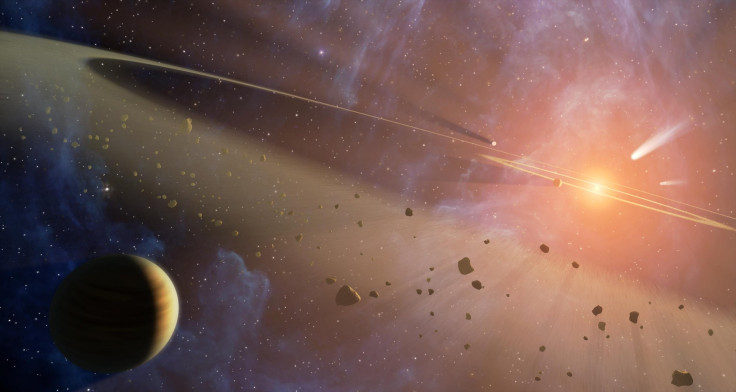Asteroid Dust Samples Show Violent Past For Old Space Rock

An asteroid that a Japanese spacecraft visited a few years ago had a history of violence. An analysis of dust samples show it was blown apart by space crashes billions of years ago and is just a big pile of rubble today.
According to a study in the journal Geology, scientists analyzed dust particles that the Japan Aerospace Exploration Agency’s Hayabusa space probe brought back from the surface of asteroid 25143 Itokawa, including measuring the amounts of gases in the samples. The results suggest that a series of smaller collisions tore apart the asteroid over time, rather than one large crash. Their dating puts the final collision at a little more than 2 billion years ago.
“The final impact could be seen as ‘the straw that broke the camel’s back,’” lead study author Fred Jourdan said in a statement from Curtin University. “Our results tell us that Itokawa was already broken and re-assembled as a rubble pile about 2.1 billion years ago, showing that ‘rubble pile’ asteroids can survive a much longer time in this state than researchers previously thought. This is due to their cushion-like nature and the abundance of dust in between the boulders.”
Before it was blown apart, Itokawa was one large rock that contained material as old as the solar system. Now it is a group of smaller pieces that together make an asteroid about 1,600 feet wide.
Scientists had already found evidence that the asteroid “had a peanut-like shape and resembled a rubble pile of boulders and dust more than solid rock,” the university explained. That was based on images Hayabusa had taken during a flyby of the asteroid. But the scientists want to know when exactly it made the transition from a single boulder to multiple rocks.
The university said the analysis was difficult because the dust particles the spacecraft sampled are small, many narrower than a hair.
“According to these results and a series of models, the scientists concluded that asteroids do not always break up due to a single cataclysmic impact,” the university said. “Instead, they can internally fragment due to the medium-sized collisions that constantly batter large asteroids until they shatter from impact.”
In addition to revealing a secret of the solar system’s formation, the findings give scientists valuable information about these types of asteroids that could one day help stop one of them from banging into the Earth, with catastrophic consequences.
Another Hayabusa spacecraft is en route to another asteroid, Ryugu, and will bring back more space rock samples in a few years. It’s possible those dust particles will yield even more information about our universe.
NASA is also getting in on the action — the space agency recently bounced its OSIRIS-REx spacecraft off of Earth’s gravity to send that probe, which launched last year, toward the asteroid Bennu. That asteroid is 4.5 billion years old, so it could teach us more about how our solar system formed, what it was like back in the day, and how the Earth came to be a habitable world.

Bennu is roughly the same size as Itokawa. OSIRIS-REx is scheduled to reach it in 2018, take a sample and then return to Earth in 2023, when scientists will analyze its chemical composition and search for organic compounds.
“Scientists think asteroids like Bennu may have collided with Earth a long time ago, seeding our planet with the organic compounds that made life possible,” according to NASA. “That means that there’s a good chance Bennu contains answers to fundamental questions about the origins of life and how our solar system came to be. We sent OSIRIS-REx on a journey to investigate.”
© Copyright IBTimes 2024. All rights reserved.











